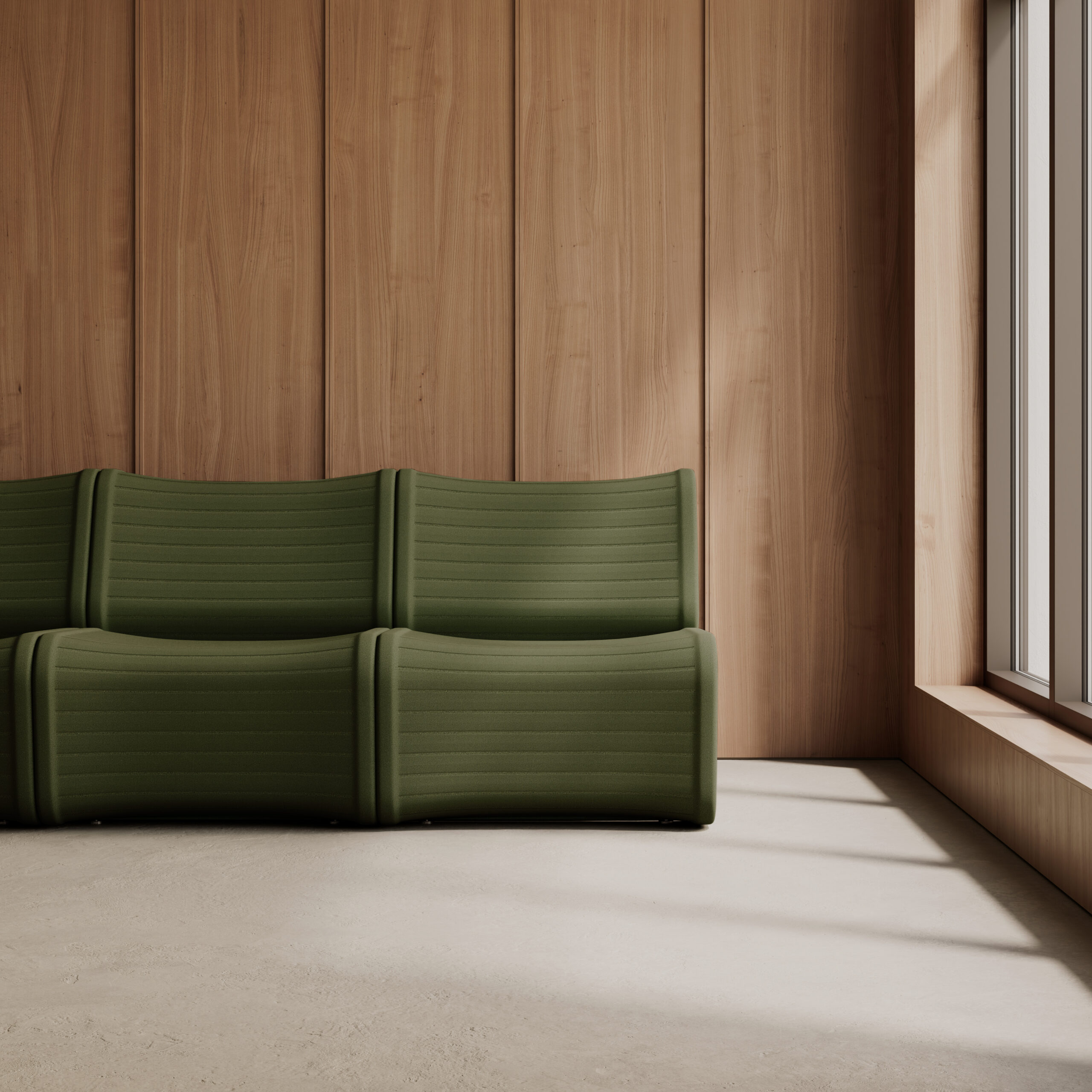 Haworth Tompkins’ extension features Corten steel fins along its facade|Powell and Moya’s 1962 theatre|Antoni Malinowski’s delicate pattern of triangles flutters over the ceiling|Powell and Moya’s heavily textured concrete survived the internal relift||
Haworth Tompkins’ extension features Corten steel fins along its facade|Powell and Moya’s 1962 theatre|Antoni Malinowski’s delicate pattern of triangles flutters over the ceiling|Powell and Moya’s heavily textured concrete survived the internal relift||
Haworth Tompkins continues its run of theatre projects with the revamp of the feted Chichester Festival Theatre
Though brutalist architecture comes in many forms – art galleries, theatres, offices and universities – it is inextricably linked with the failed social housing projects of the 1960s. It is hard to imagine the style outside of a city, which helps to explain why the Chichester Festival Theatre, the creation of influential modernists Powell and Moya, is so delightfully incongruous. Built in 1962 for the Chichester Summer Festival at the behest of local patron Leslie Eversheds Martin, its hexagonal concrete structure cantilevers over the edge of leafy Oaklands Park, worlds away from any urban jungle. Its unconventional stage is open-thrust – ie, projecting right into the audience – with a hexagonal shape that mirrors the building’s external geometry.
Now Grade II* listed, the theatre was only ever intended to be a temporary venue, but such was the success of its muscular symmetry that it soldiered on for another 50 years before an overhaul became essential. Powell and Moya had already tinkered with their design, adding a pair of triangular wings to each side of the building. During the intervening decades, however, the purity of the concept was watered down further by a number of poorly designed but necessary additions: prop rooms, toilets and other back-of-house amenities. These underwhelming facilities serviced a roster of board-treaders that reads like a who’s who of the theatre. Laurence Olivier and Michael Redgrave, to name but two, have delivered their lines from Chichester’s stage. Whoever took on the job of revamping Powell and Moya’s original was not only wrestling with a unique history, but a broad spectrum of interested parties, including English Heritage, the 20th-Century Society and the surprisingly radical townsfolk of Chichester.
Enter London-based practice Haworth Tompkins, which, charged with unpicking the mess, purged the site of unsympathetic accretions and patched up the ailing concrete. The architects then housed dressing rooms, offices and workshops in a Corten-clad volume that meets the original structure with appropriate oomph. “It has the same muscularity as the concrete,” says Steven Tompkins of the material. “It will go back to a dark, bitter-chocolate colour so it will become almost like a shadow of the main object.”
The vertical fins of the Corten are repeated on new box-like stairwells that dangle from the soffit of the hexagon. In search of a visual connection with the park, the practice integrated slimline windows into what were solid volumes. Reportedly, Powell and Moya shared this desire for transparency, but one feels that ultimately it will dispel the magic of being cloaked in darkness before emerging into a beautifully lit theatre. The sense of exposure works far better on the ground floor, where the architects have carefully reorganised a somewhat eccentric layout (an ice-cream vendor was wrapped around one of the pillars, for example) into a bright, easily navigable space with two new cafeterias flowing effortlessly into outdoor patios.
In a playful nod to the constitution of the existing concrete – so granular it appears the building sand was shovelled from the beach – the architect laid trapezoidal floor tiles made from concrete mixed with seashells. Elsewhere, artist and serial Haworth Tompkins collaborator Antoni Malinowski added some decorative flair, such as the silvery triangular motifs adorning the cafe ceiling, repeated in a lightwell boring through the new extension. “It is a seaside festival building so it has to have that kind of lightness and jollity. It cannot take itself too seriously,” says Tompkins.
The architects also remedied flaws in the original construction by steepening the seating rake to strengthen the previously weak connection between audience and performer. This had the added bonus of creating an air supply plenum under the seats allowing for natural heating and cooling via a ground-source heat pump. Changing fire regulations had resulted in the closure of two side wings of seating, which have been reinstated. Most controversially, however, is the decision to make the stage reconfigurable, which removes the theatre’s unique element but will most certainly allow for more versatile productions.
Wisely, Haworth Tompkins resisted the urge to iron out all the imperfections in Powell and Moya’s robust building. Key to this was a deep understanding of their original intentions, and credit is due to the research team. The practice is fast garnering a reputation as experts in the field of theatre design, but then, if you are to be typecast, than there are far worse roles to play.
























